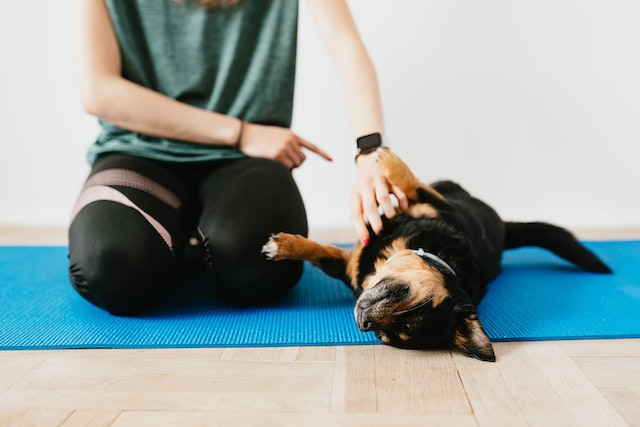What is the best way to introduce a new dog to the family?

When introducing a new dog into a household with existing pets, whether they are dogs, cats, birds, or other small mammals, it can be quite challenging. How to bring a new dog home smoothly without conflicts or aggression is a common question posed to animal behaviourists. The characteristics of the new dog you’re bringing in play a crucial role. Before making the decision to adopt a dog, it’s essential to consider factors like gender, age, breed, and past experiences of the dog.
Introducing a new dog can raise concerns among the other pets in the household. However, once the initial adjustment period passes, the new addition can bring joy!
Introducing a New Dog to Other Dogs
If your current dog is energetic and playful, bringing in a puppy or a young adult dog could work. However, if your current dog isn’t likely to tolerate the antics and energy of a young dog, consider getting an older dog, as it won’t disrupt your older dog’s routine.
Choosing a dog of the opposite sex is generally advised to reduce the chance of aggression. Reading up on breed characteristics can help you choose a breed that is likely to harmoniously coexist with your existing dog.
Avoid selecting breeds known for dog aggression, such as pit bulls. When your resident dog tells the new dog to “back off,” don’t get upset. This is how the new dog learns house rules. A hierarchy will form within the first few weeks, and typically, the older and dominant dog will take the leadership role.
Here are some suggestions for introducing one dog to another:
- A relaxed introduction through sniffing and play is favourable as long as both dogs show friendliness towards each other.
- If unsure of their reactions, take them for a walk together in a neutral area like a park (not your yard). Once they exhibit friendly behaviour or start ignoring each other around other dogs, you can move the practice to your yard. Finally, you can allow them to interact indoors with your other pets.
- Note that wagging tails don’t always indicate happiness. A tail straight up and stiff could signal aggression. A tail tucked between the legs suggests fear and nervousness. A gradual, supervised approach is crucial to prevent panic. A horizontal tail wagging in a relaxed manner is a positive sign.
- When off-leash, one of the dogs will establish dominance. This is a normal and necessary step in dog relationships, although it can look and sound intimidating. Dogs may circle each other, even engage in minor tussles, with one lying on the other’s back and the other trying to stand beside. There might be some biting and neck grabbing. Don’t be overly concerned; this is part of establishing hierarchy. Once the dominant dog asserts itself, it might not feel the need to repeat these actions as long as the subordinate dog doesn’t continue to challenge.
- Once dogs get along, ensure you support the dominant dog in its position. Feed it first, pet it first, and care for it first. Give it access to its preferred sleeping area. Sharing might not be normal behaviour for most dogs. Additionally, I suggest feeding dogs separately and avoiding offering particularly enticing chew toys. Once the hierarchy stabilises, you can provide the desired chew toys.
Introducing a Dog to a Cat
When introducing a new dog to a household with a cat, the dog’s age and gender aren’t as crucial, as puppies tend to naturally play with cats. However, if your cat won’t tolerate a playful puppy’s antics, consider an older dog.
It can be beneficial to have a dog introduced to a cat in a cat-dominant household. The dog can learn to tolerate and even like the cat as it grows up.
If getting an adult dog, find out whether it’s been exposed to or gets along with cats in the past. If adopting from a breed rescue or breeder, ensure the breed is known to be cat-friendly.
When introducing your new dog to your cat, have it on a leash, and try to pick a calm moment for the introduction.
Feeding them delicious treats can make them feel good and help maintain distance between them, which makes the cat feel safe. Additionally, you can practice obedience training with your dog and allow your cat to voluntarily approach the new dog if it’s willing.
Never let your dog chase your cat.
Ensure there are escape routes and high hiding places for your cat, so it can flee whenever it wants. Your cat needs a private, safe hideaway, which is crucial.
Introducing a Dog to Other Small Mammals or Birds
When introducing a dog to small mammals or birds, extreme caution is needed. Some dogs have strong predatory instincts, which could be dangerous for both parties. Don’t allow the dog to be alone with these small animals until it shows no interest (which might take weeks or even months).
If your dog has strong prey drive (such as greyhounds or terriers), your small animals could be in a risky situation if not kept safely away from the dog.
Find a secure place for your small mammals or birds. Fencing is necessary, and it’s best to position them where the dog can’t reach.
Ensure that the living space of your small mammals or birds is “dog-free,” and closely supervise your dog.
